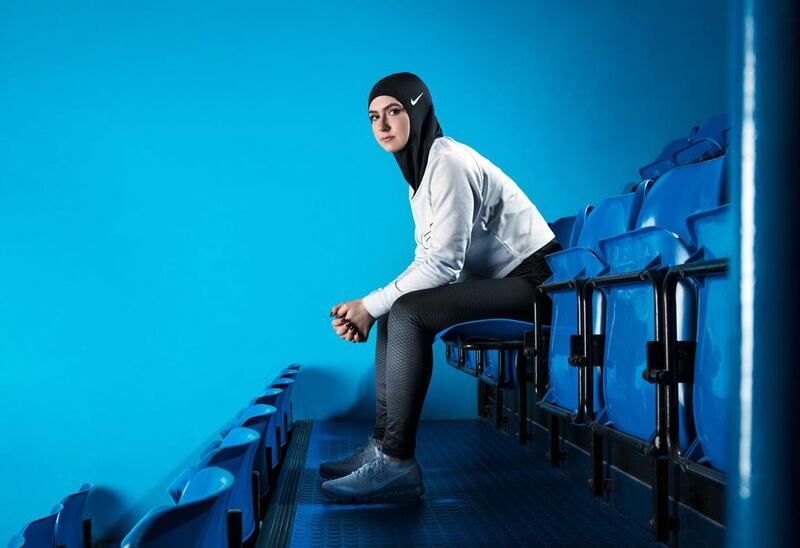The launch of the Nike Pro Hijab, a lightweight, breathable, adjustable, competition-worthy garment for hijab-wearing athletes, reflects both consumer demand and the growing number of elite female Muslim athletes.
In the 2016 Rio Olympics, for example, 14 Muslim women - four of them in hijab - won medals.
“Sports is one of the few platforms that brings people together, and the more big brands are noticing the impact of Arab Muslim female athletes, the more the inclusion there is - with everyone having an equal chance at sports,” said Amna Al Haddad, an Emirati weightlifter and one of the female athletes who was consulted on the design of the garment.
Al Haddad, 27, was the first Emirati, GCC national and Arab female to compete at CrossFit Asia in 2012 – and she did it all in a hijab. She travelled to Nike headquarters in Oregon a year ago to participate in the initial stages of product development.
“I am very proud that Nike is finally launching the product that will cater to a new segment of rising female athletes around the world and providing them with the right support,” she said.
Emirati figure skater Zahra Lari, who previously had her hijab custom-made to withstand the rigours of jumping and spinning, was also part of the development process.
“My designer makes my hijab to match my competition clothes,” said the 22-year-old athlete. “When I first started skating I wore a shayla but quickly realised that it wasn’t tight enough and would quickly open.”
Lari is aiming for the 2018 Winter Olympics in Pyeongchang, South Korea, and if she makes it there, she will make history on two fronts: as the first Emirati athlete to compete at a Winter Olympics and the first to do so in a hijab.
“I am so excited about this launch and I think it will make a huge difference is the female athletes lives,” she said. “It is just what we need. It’s an amazing time for hijabi athletes and I am honored to work with Nike and be a part of this new launch.”
Contrary to what others who do not cover may think, neither Lari or Al Haddad see the hijab as any sort of hindrance.
“If the hijab fits right, its actually the opposite,” said Lari. “It is freeing and liberating. You can do anything and any sport with hijab without feeling any hindrance to your sport or beliefs.”
Any limits on female Muslim athletes rest with society and within their own minds, says Al Haddad.
“It’s always a choice, whether you want it to hinder you, it will, and if you don’t, it won’t hinder you from doing sports,” she said.
For Pakistani-Canadian Shireen Ahmed, an activist focusing on Muslim women in sports, hijab-wearing football player for 35 years, and frequent visitor to the UAE, wrote in an email that she surprised with the latest announcement from Nike.
“Nike is arguably the most prominent sports brand in the world. That they are recognising the different needs of athletes is a good thing. But I can’t help but feel that the swoosh on the head is a little ridiculous,” she wrote. “Modest sportswear is not a new thing. There have been many companies ahead of Nike.”
Those brands include: Hummel, Oiselle, ResportOn, Capsters and Friniggi, born, she said, “from a need in the community.”
Rather than finding something appropriate to cover with, she says, the biggest challenge facing female Muslim athletes, are “hijab bans or sports that do not allow uniform accommodation”.
Access to proper equipment is also a problem, she added.
“Muslim girls might not feel as if they are supported generally. There are not a lot of prominently featured Muslim women, (both veiled and unveiled),” wrote Ms Ahmed.
rghazal@thenational.ae





